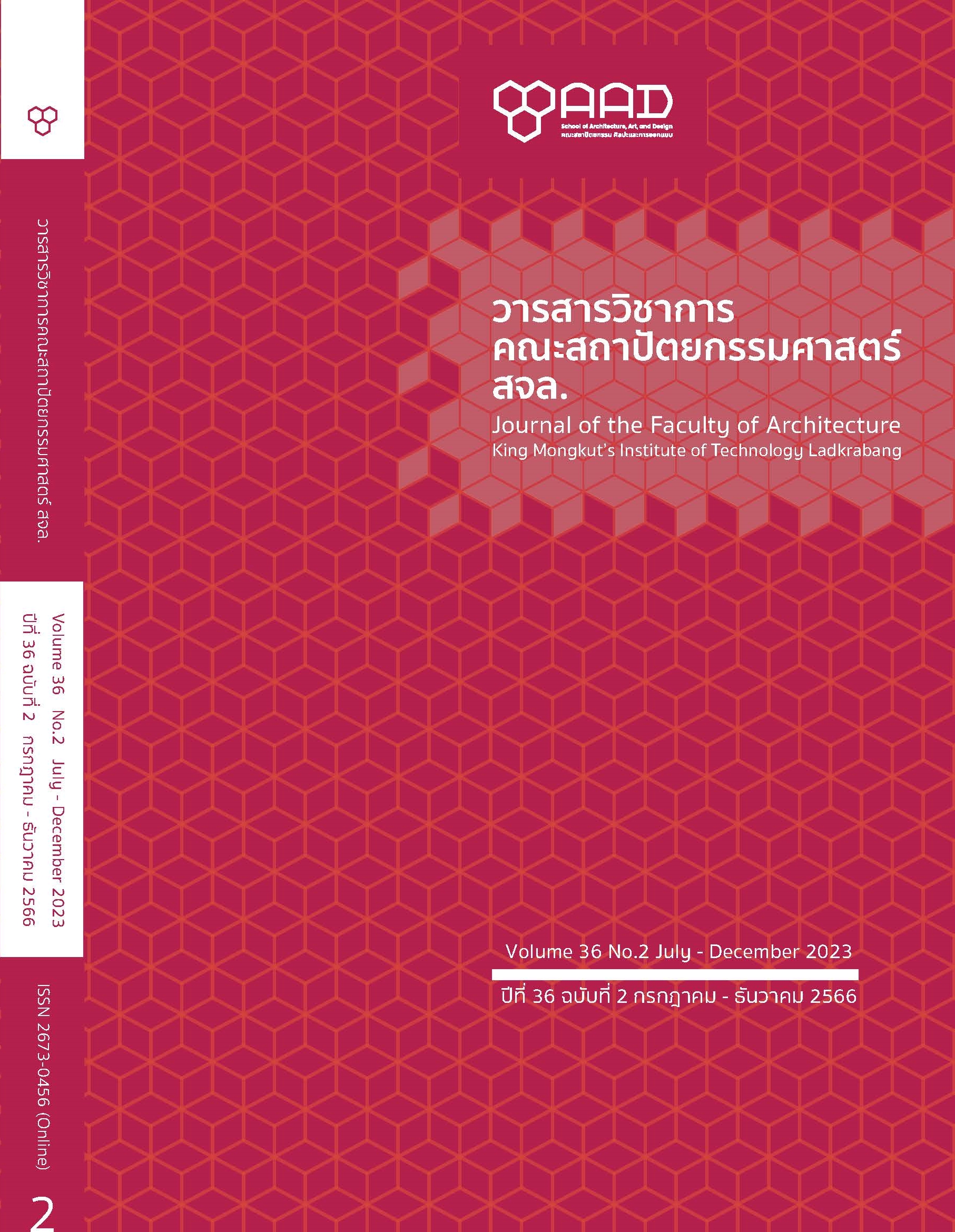Components Affecting Identical Existence of Traditional Community District in Rattanakosin Island: A Case Study of Talad Noi Area, Bangkok
Main Article Content
Abstract
Rattanakosin Island of Bangkok is an important area in conserving and fostering national uniqueness, art, culture, service, and commercial activities, as well as tourism in the field of arts and cultural conservation. This area consists of traditional communities with various contexts that indicate
the development and historical background through urban structures or cultural heritage sites, including the continuation of traditional social groups' beliefs, faith, wisdom, tradition, culture, and economic activities. The researcher analyzed the authenticity of traditional communities on Rattanakosin Island and described the variables that constitute their identity in order to propose policy guidelines impacting the preservation of traditional communities' identities. Through the review of documents, concepts, and relevant research, including surveying the community, interviewing with key informants, and the general public, a qualitative research method was benefit for community’s identical study. According to the study's findings, Talat Noi district is a traditional community situated on Rattanakosin Island with a complete identity as evidenced by its physical, sociological, and economic features. All are aspects that interact with one another and represent Talad Noi district's existence. This also resulted in the introduction of policy guidelines, such as planning and management for the preservation and development of the traditional community in physical, cultural, social, and economic dimensions, in order to remain in the midst of
a changing context.
Article Details

This work is licensed under a Creative Commons Attribution-NonCommercial-NoDerivatives 4.0 International License.
This work is licensed under a Creative Commons Attribution-NonCommercial-ShareAlike 4.0 International License.
Copyright Transfer Statement
The copyright of this article is transferred to Journal of The Faculty of Architecture King Mongkut's Institute of Technology Ladkrabang with effect if and when the article is accepted for publication. The copyright transfer covers the exclusive right to reproduce and distribute the article, including reprints, translations, photographic reproductions, electronic form (offline, online) or any other reproductions of similar nature.
The author warrants that this contribution is original and that he/she has full power to make this grant. The author signs for and accepts responsibility for releasing this material on behalf of any and all co-authors.
References
Chapin, S.F. (1972). Urban land use planning. 3rd ed. University of llinois Press.
Chootrakul, P., & Haocharoen, K. (2020). Adaptation to the existence of traditional community district Nang Loeng community, Bangkok. Built Environment Inquiry Journal, 20(1), 21-36. (in Thai)
Cohen, A. P. (1985). The symbolic construction of community. Tavistock Publications.
Cultural and Natural Environment Management Bureau. (2016). Cultural environment traditional communities conservation handbook. https://nced.onep.go.th/คู่มือการอนุรักษ์สิ่งแ/ (in Thai)
Henri, L. (1992) The production of space. Wiley-Blackwell Press.
Jindamaneerojana, S., Apichatabutra, P., & Wallipodom, S. (2011). Traditional community district in Bangkok. Silpakorn University. (in Thai)
Montgomery, J. (1998). Making a city: Urbanity, vitality, and urban design. Journal of Urban Design, 3, 93-116.
Norberg-Schulz, C. (1980). Genius loci towards a phenomenology of architecture. Rizzoli.
Office of Natural Resources and Environmental Policy and Planning. (2017). Masterplan in conservation and development in Rattanakosin island. Chula Unisearch. (in Thai)
The Secretariat of the Cabinet. (2021). Government Gazette in Conservation and Development in Rattanakosin island A.D.2021. https://ratchakitcha.soc.go.th/documents/17175233.pdf (in Thai)
The United Nations Educational, Scientific and Cultural Organization. (2008). Hoi An Protocols for best conservation practice in Asia: professional guidelines for assuring and preserving the authenticity of heritage sites in the context of the cultures of Asia. https://unesdoc.unesco.org/ark:/48223/pf0000182617
The World Heritage Center. (2009). Operational Guidelines for the Implementation of the world convention. UNESCO. https://whc.unesco.org/en/guidelines/


